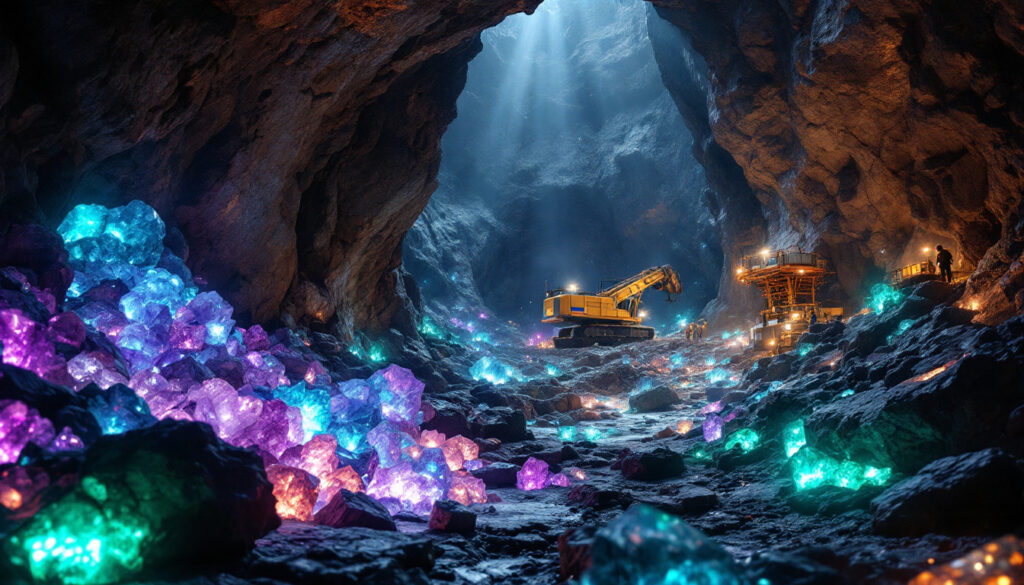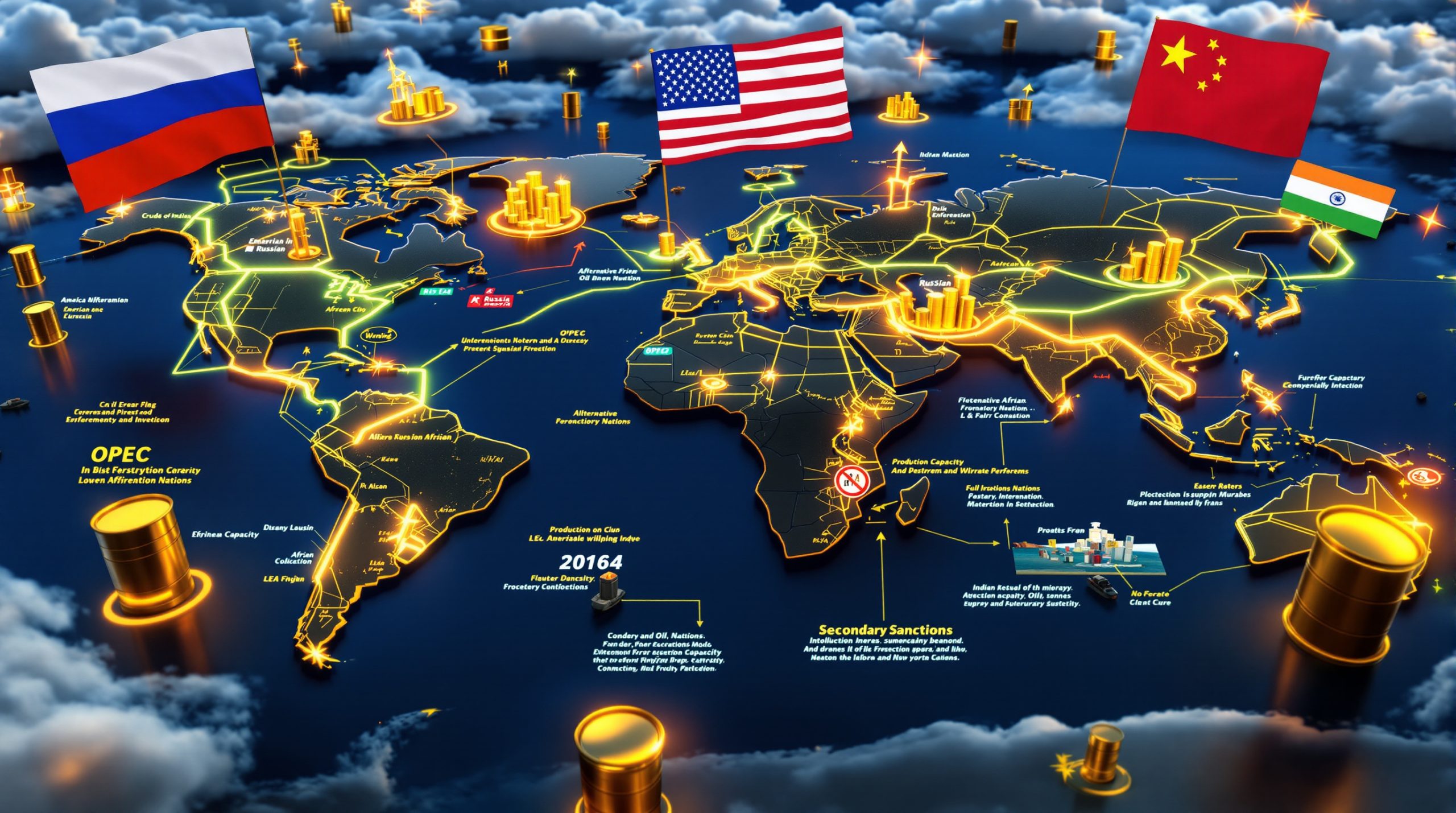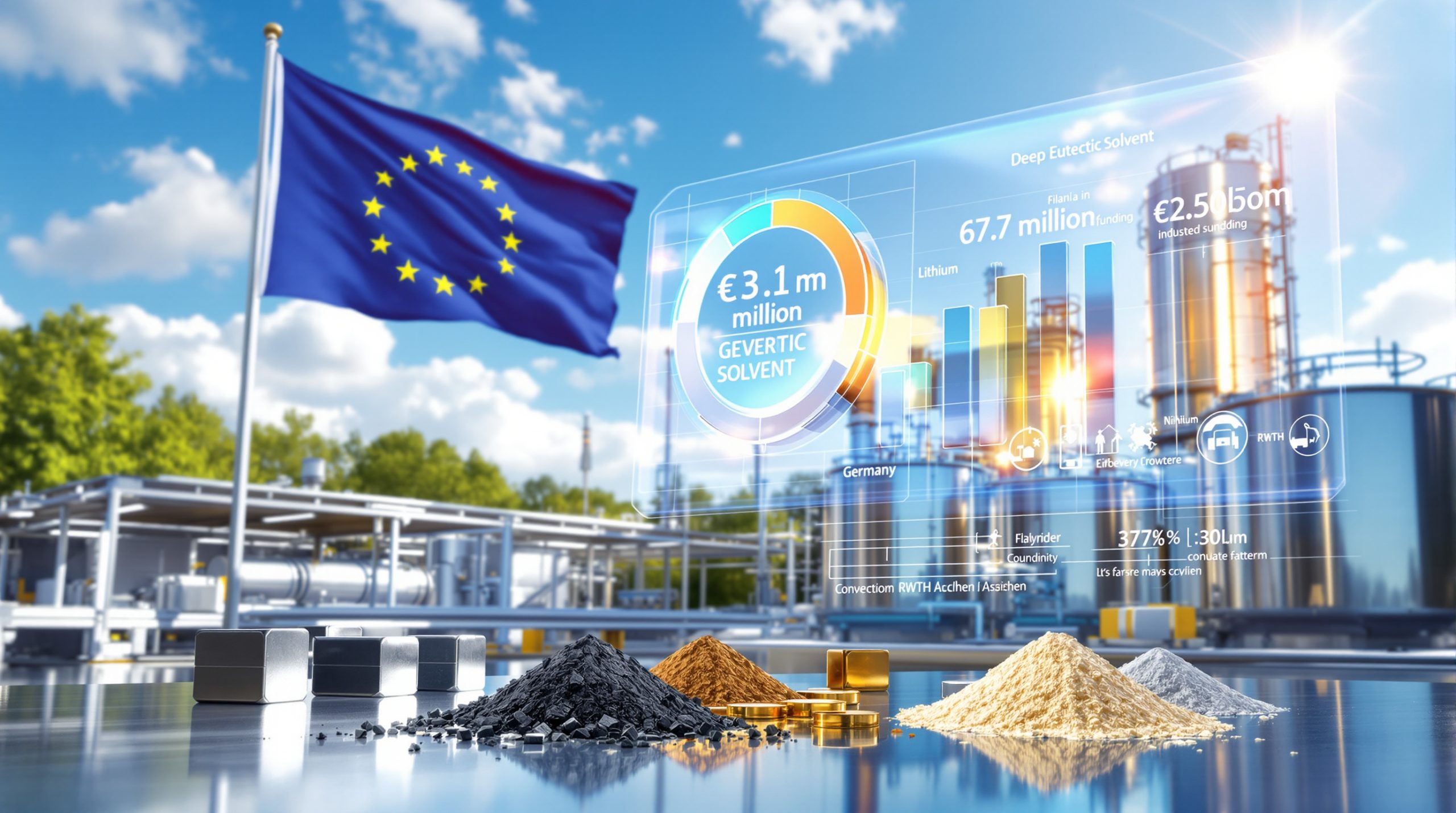Ukraine-US Rare Earth Minerals Deal: Strategic Implications and Current Status
Key Findings Summary
The proposed rare earth minerals agreement between Ukraine and the United States represents a strategic effort to diversify global supply chains critical for defense, technology, and renewable energy sectors. Negotiations, delayed by at least three weeks as of April 2025, intersect with ongoing Ukraine-Russia peace talks, underscoring the geopolitical complexity of resource diplomacy. The deal's economic potential for Ukraine includes infrastructure investment and long-term diversification, while the U.S. aims to reduce reliance on dominant suppliers like China.
What Is the Ukraine-US Rare Earth Minerals Deal?
Background on the Proposed Agreement
The strategic minerals agreement focuses on securing access to rare earth elements (REEs), though specific minerals remain unspecified in public statements. Rare earths are essential for advanced technologies, including missile guidance systems, electric vehicles, and wind turbines. Ukraine's untapped REE reserves, particularly in regions like the Azov Basin, could position it as a key supplier amid shifting global rare earth insights.
The U.S. Department of Energy has prioritized REE partnerships to mitigate supply chain vulnerabilities exposed during recent trade disputes. This partnership represents a significant shift in global mineral politics, as Western nations increasingly seek to establish mineral security outside of traditional supply channels.
Timeline of Negotiations
Initial discussions began in late 2024, with a preliminary framework announced by U.S. and Ukrainian officials in January 2025. Ministerial-level talks accelerated in March, focusing on extraction rights and profit-sharing mechanisms between the nations.
However, President Donald Trump's April 2025 Truth Social post confirmed a three-week delay in finalizing the deal, attributing it to unresolved technical or diplomatic hurdles. The current status hinges on Ukraine's formal endorsement, which awaits alignment with broader peace negotiations with Russia.
Why Are Rare Earth Minerals Strategically Important?
Critical Applications in Modern Technology
Rare earth minerals like neodymium and dysprosium are vital for permanent magnets in electric motors and generators, which power 90% of renewable energy systems. These elements enable miniaturization of electronic components while maintaining high performance, a critical factor in advanced military systems.
The U.S. Department of Defense has highlighted their role in F-35 fighter jets and satellite communications, with 400 kilograms of REEs required per F-35. Without secure access to these materials, production of precision-guided weapons, night vision equipment, and communication systems faces significant risk.
Global Supply Chain Considerations
China currently controls 60% of global REE production and 85% of processing capacity, creating vulnerabilities for Western nations. This concentration became especially concerning after China's export restrictions were implemented in 2010 and again in 2023, causing price volatility and supply uncertainty.
The Ukraine-U.S. partnership could reduce China's market dominance by adding alternative sources, potentially reshaping trade flows. Ukraine's proximity to EU manufacturing hubs offers logistical advantages for Western industries seeking nearshoring opportunities, with transport costs potentially 30% lower than imports from East Asia.
What's Causing the Delay in Finalizing the Deal?
Trump's Statement on the Unsigned Agreement
President Trump's public disclosure of the delay on Truth Social reflects diplomatic tensions over Ukraine's simultaneous engagement with U.S. and Russian negotiators. His statement noted, "Ukraine has not signed a very important rare earths deal, which is now at least three weeks late."
Analysts speculate that Kyiv may be leveraging the mineral deal as a bargaining chip in peace talks, delaying ratification until security guarantees are secured. The public nature of Trump's comments suggests growing impatience within U.S. policy circles regarding the strategic minerals partnership.
Geopolitical Factors Affecting the Agreement
Eastern Ukraine's mineral-rich territories, partially occupied by Russian-backed forces, complicate extraction plans. A 2025 International Crisis Group report warned that premature mining agreements could destabilize ceasefire negotiations by creating economic incentives to control disputed regions.
Additionally, EU nations have expressed concerns over being sidelined in U.S.-Ukraine negotiations, advocating for multilateral oversight. Germany and France have proposed a complementary European REE investment framework that would coordinate with, rather than compete against, the U.S. initiative.
How Does This Deal Connect to Ukraine-Russia Peace Negotiations?
Trump's Comments on Peace Negotiations
Trump's assertion that peace talks are "going smoothly" contrasts with Ukraine's insistence on territorial restitution. His statement connecting mineral agreements with peace processes hints at a comprehensive diplomatic strategy linking economic development to conflict resolution.
The linkage between REE access and security concessions suggests a quid-pro-quo dynamic, where economic aid is contingent on Ukraine's flexibility in peace terms. This approach echoes previous resource diplomacy efforts in post-conflict zones, where economic incentives have been used to facilitate political compromise.
Strategic Timing Considerations
The deal's delay coincides with Ukraine's spring 2025 counteroffensive planning, which relies on Western military and economic support. Resource agreements often serve as confidence-building measures during peace processes, but their timing can affect negotiating leverage for all parties.
Historical precedents, such as 2014's Minsk agreements, demonstrate how resource agreements are often deferred until conflict milestones are achieved. Ukraine appears to be balancing immediate economic benefits against long-term sovereignty concerns, particularly regarding exploitation rights in contested territories.
Economic Implications of the Rare Earth Deal
Benefits for Ukraine's Economy
Ukraine's REE sector could generate $1.2 billion annually by 2030, according to the Kyiv School of Economics. This revenue stream would significantly bolster the nation's post-conflict reconstruction efforts and create an estimated 5,000 specialized mining and processing jobs.
The deal mandates U.S. investment in mining infrastructure, including a proposed $500 million processing facility in Dnipro. Long-term diversification away from steel and agriculture may reduce Ukraine's exposure to commodity price fluctuations, addressing a persistent vulnerability in its export-oriented economy.
U.S. Strategic and Economic Interests
Reducing dependence on Chinese REE imports, which cost the U.S. $160 million monthly in 2024, is a priority for the Department of Commerce. American technology manufacturers have identified supply chain resilience as their top concern in quarterly SEC filings since 2022.
The deal aligns with the Defense Production Act's 2023 expansion, authorizing $750 million for domestic REE processing partnerships. This reflects a broader national security strategy to ensure critical mineral shortages don't impact both civilian and military applications during potential future trade disruptions.
Impact on Global Rare Earth Markets
Market Impact Analysis
The agreement could disrupt China's pricing power, potentially lowering global REE costs by 15–20% by 2026. Increased competition would particularly benefit neodymium and praseodymium markets, where price premiums have exceeded 40% during recent export restrictions.
However, China's National Development and Reform Commission has threatened export controls on processing technologies, risking short-term supply shocks. Industry analysts note that developing alternative processing capacity typically requires 3-5 years, creating a vulnerability window even after mining operations begin.
Investment Implications
Junior mining firms like Black Iron Inc. have surged 30% on the TSX Venture Exchange since negotiations became public. Institutional investors are increasingly allocating capital to rare earth processing ventures, with $3.2 billion in dedicated funding announced since January 2025.
Tech manufacturers, including Tesla and Siemens, are auditing Ukrainian mineral reserves to secure offtake agreements. Strategic materials procurement teams are revising their five-year sourcing projections, anticipating a more diversified but potentially volatile transition period in global REE markets.
Next Steps for the Ukraine-US Minerals Agreement
Potential Timeline for Resolution
The U.S. Department of State anticipates a signing ceremony by June 2025, contingent on Ukraine's parliamentary approval. Technical working groups continue to address extraction methodologies and environmental safeguards, with monthly progress reports submitted to both governments.
Key milestones include environmental impact assessments and the finalization of profit-sharing terms, which currently allocate 65% to Ukrainian state entities. Ratification would trigger an initial $200 million investment tranche for preliminary surveying and infrastructure development.
Monitoring Factors
Upcoming NATO summits in May 2025 will likely address the deal's security implications. Diplomatic signals from Beijing and Moscow will provide insights into potential counter-measures or competing offers to Ukraine.
Market analysts recommend tracking spot prices for dysprosium and terbium as leading indicators of agreement progress. Unusual trading volumes in rare earth ETFs often precede official announcements, serving as early warning signals for policy developments.
FAQ About the Ukraine-US Rare Earth Minerals Deal
What specific rare earth minerals are included in the agreement?
While unconfirmed, industry sources cite deposits of cerium (used in catalytic converters) and lanthanum (battery alloys) as focal points. Heavy rare earths, including europium and terbium, remain priorities due to their higher value and strategic applications.
Ukraine's State Geological Service estimates 3 million metric tons of REE reserves, predominantly in Krivyi Rih. According to recent analysis, geological surveys indicate particularly high concentrations of scandium, which commands premium pricing ($3,500-4,000 per kilogram) for aerospace applications.
How would this deal affect global rare earth prices?
Market diversification typically reduces price volatility by 30-40% in comparable commodity markets. China's current dominance allows for sudden price movements of up to 25% following policy announcements, a risk that additional supply sources would mitigate.
Analysts forecast initial price increases during the investment phase, followed by gradual normalization as production scales. Dysprosium prices, currently at $450/kg, could stabilize around $350-375/kg within 18 months of Ukrainian production coming online.
What are the environmental considerations of expanded rare earth mining?
Open-pit mining in Ukraine's steppe regions risks soil degradation and water contamination. REE extraction produces acidic wastewater and radioactive thorium byproducts requiring specialized containment systems.
The draft agreement mandates adherence to EU REACH regulations, requiring $200 million in wastewater treatment investments. As mining experts have noted, rehabilitation bonds equal to 15% of project value must be established before extraction begins, ensuring funds for eventual site restoration.
Disclaimer: This article contains analysis and forecasts based on current information. Market conditions and geopolitical market strategies may change, potentially affecting the accuracy of predictions. Readers should conduct additional research before making investment decisions related to the critical minerals race.
Want to Capitalise on the Next Major Mineral Discovery?
Stay ahead of the market with Discovery Alert's proprietary Discovery IQ model, which instantly notifies investors about significant ASX mineral discoveries like those discussed in this article. Explore why major mineral discoveries can lead to substantial returns by visiting the Discovery Alert discoveries page and start your 30-day free trial today.




